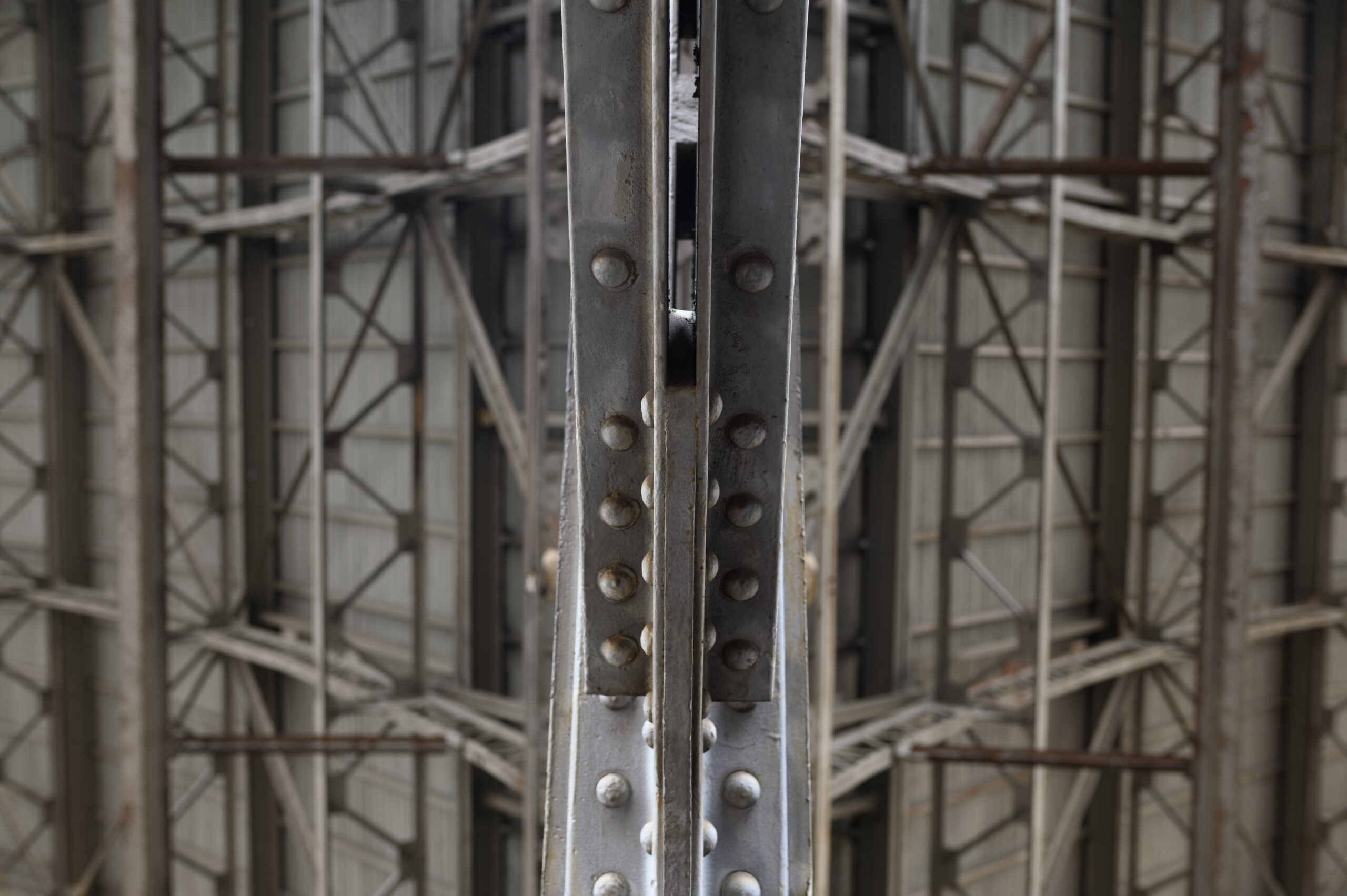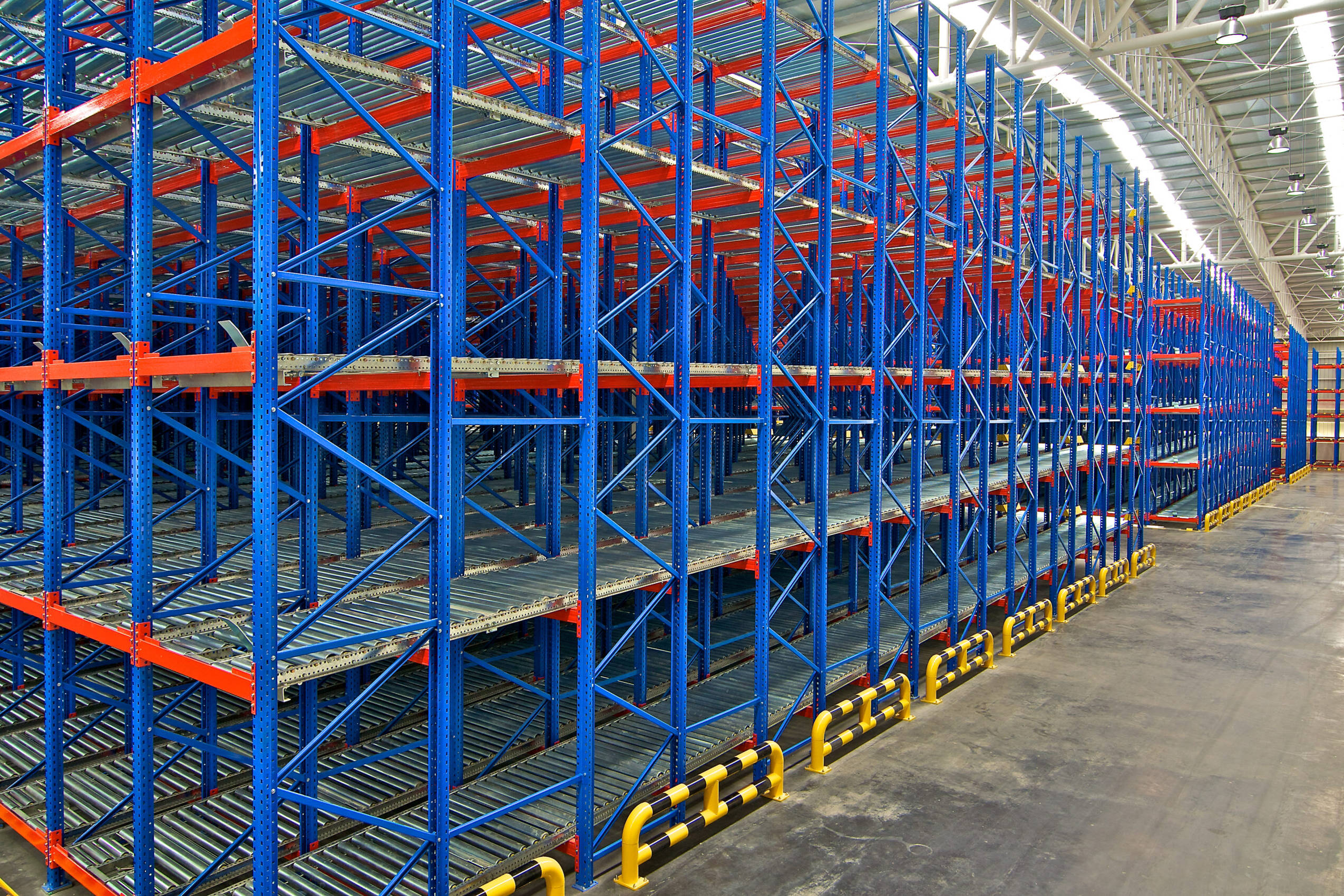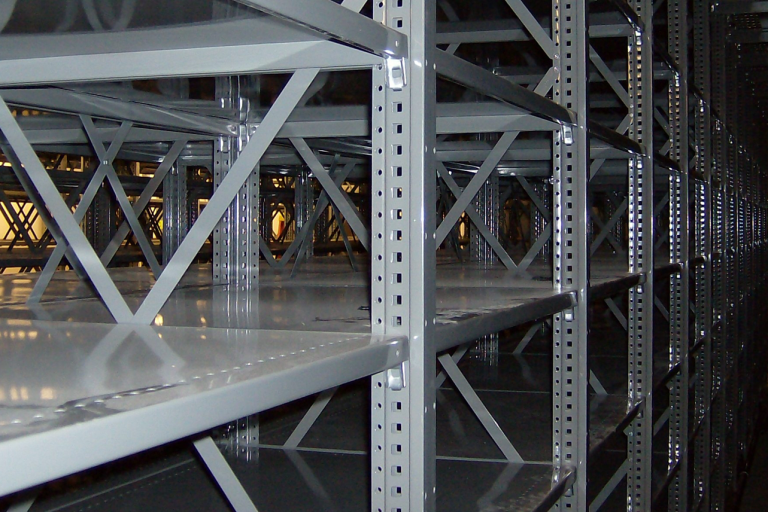Proper Sizing
Proper Sizing and Selection of Frames and Beams
The depth of a frame is determined by the size of the pallet you plan to store on it. For the moment set aside the the load on top of the pallet and concentrate only on the pallet itself. The most common size pallet available is 48″ deep x 40″ wide.
When determining the proper depth of an upright to be used you must take the pallet depth – which in this case is 48″ and deduct 2″ to 3″ from the front and rear of the pallet. The ideal situation for storing pallets on rack is for the pallet to overhang the beams 2″ to 3″ both front and rear. The best frame for a 48″ pallet is 42″ or 44″. Uprights 42″ deep are the most common size and would be the best selection when storing 48″ deep pallets.
The reason for this is that when a forklift operator is putting away a pallet in upper levels it is best to allow the overhang so the driver does not miss the beam when setting the pallet down which could cause the pallet to fall through and cause an accident.
Sizing and Selection of Beams
Beams are sized based on the loads being placed on them. The first piece of information you need is the width of the load be placed on the beams. Next you need to determine out how many loads wide will be stored in one bay. Normally this is two unless you are dealing with a tunnel bay or extremely light loads. Loading pallet rack is also limited by the capacity of your concrete slab. To determine the correct length of beams to be used, take the width of the load times the number of pallets wide. (we will use two in this example) plus 3” to 4” between each load (if a standard forklift is to be used in this application) and the upright column and another 3” to 4” between pallets. If you have a 42″ wide load and is storing two pallets wide and is using a standard forklift the proper beam size would be around 96”.




